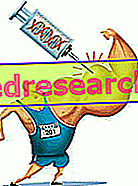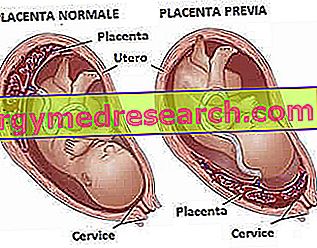article taken from the graduation thesis of Dr. Boscariol Lorenzo
Recent advances in the field of gene therapy open up new and interesting perspectives for the treatment of different pathologies; since the first tests of genetic therapy were conducted with proteins strictly related to doping (eg erythropoietin and growth hormone), the connection between this and the sport is evident.

In theory, all levels of proteins present in our bodies can be modulated through gene therapy.
The conference on genetic doping that was held in March 2002 by WADA [Pound R, WADA 2002], and the "European Congress of work on Harmonization and Future Developments in Anti-Doping Policy" which took place in Arnhem, Holland, in the same year, gave scientists, doctors, doctors, governments, anti-doping organizations and pharmaceutical companies the possibility of exchanging any kind of information on the results of research and methods of surveying this new doping technique .
Starting January 1, 2003, the International Olympic Committee (IOC) included genetic doping in the list of prohibited classes of substances and methods [WADA, 2007]. Since 2004 WADA has taken the responsibility of publishing the international doping list, which is updated every year. The method of genetic doping included in this list is defined as the non-therapeutic use of cells, genes, genetic elements or the modulation of genetic expression, with the aim of improving athletic performance.
This article aims to:
- to clarify whether in sports it is actually possible to make use of the ever increasing knowledge deriving from gene therapy, a new and promising branch of traditional medicine;
- identify the possible ways in which gene therapy can be used in order to increase performance.
In the past, even those drugs that were still in an experimental research phase have found space in the world of sport; for this reason, both the World Anti-Doping Agency (WADA) and the International Olympic Committee (IOC) expressed their concerns.
"The athletes were not born all the same" : this is the quote from Sir Roger Bannister, the first man who traveled the mile in less than 4 minutes. People of different ethnic origins may be ahead of the others, just think of West African racers who dominate short-distance races, or of athletes from East Africa who win the marathon; on the other hand, Caucasians dominate in swimming competitions.
In this age of genetics and genomics, it will be possible to identify the genes that determine the genetic predisposition of a person for a specific sport [Rankinen T at al., 2004]. The study of genes at a young age can be the best way to develop a great athlete from a child and to create a specific personal training program. This study applied to athletes can also be used to identify specific training methods with the aim of increasing the genetic predisposition for that type of training [Rankinen T at al., 2004].
But will the study of genes result in better athletes? Marion Jones and Tim Montgomery were both 100 meters speed champions, they had a baby in the summer of 2003. Even Steffi Graf and Andre Agassi (both number one in the tennis world championships) have children. These children will most likely be favored over others, but there are also other factors, such as environmental and psychological ones, which will determine whether or not they become champions.
Gene therapy can be defined as the transfer of genetic material into human cells for the treatment or prevention of a disease or dysfunction. This material is represented by DNA, RNA, or by genetically altered cells. The principle of gene therapy is based on the introduction into the cell of a therapeutic gene to compensate for the absent gene or to replace the abnormal one. Generally, DNA is used, which encodes the therapeutic protein and is activated when it reaches the nucleus.
"Most athletes take drugs" [De Francesco L, 2004]. A survey by the Drug Research Center concluded that less than 1% of the Dutch population took doping products at least once, for a total of around 100, 000 people. 40% of these people have been using doping for years and most of them do strength training, or body building. The use of doping substances in elite sport appears to be greater than 1% indicated for the general population, but the exact figure is not known. The percentage of elite athletes who test positive for doping controls has fluctuated between 1.3% and 2.0% in recent years [DoCoNed, 2002].
The definition of genetic doping formulated by WADA leaves room for questions: what exactly does non-therapeutic mean? Can patients with muscle dysfunctions treated through gene therapy be admitted to the competitions? The same consideration applies to cancer patients who have been treated with chemotherapy and who now receive the EPO gene encoding erythropoietin to speed up the recovery of bone marrow function.
Current gene therapy research is also carried out to speed up the healing process of a wound, or to alleviate muscle pain after an exercise; such practices may not be considered by all to be "therapeutic" and their performance-enhancing properties can be questioned.
From the clinical point of view it would be more appropriate to better specify the definition of genetic doping, especially in the light of improper use of gene transfer technologies.
WADA (section M3 of the World Anti-Doping Code (version 1 January, 2007) justified the prohibition of genetic doping through the following points: a) proven scientific evidence, pharmacological effect or experience, that the substances or methods included in the list have the ability to increase sports performance; b) the use of the substance or method causes a risk, real or presumed, for the health of the athlete. c) the use of doping violates the spirit of sport. This spirit is described in the introduction of the Code with reference to a series of values such as ethics, fair play, honesty, health, fun, joy and respect for the rules.

Unlike therapies on somatic cells, alterations of the germ lines are permanent and are also transmitted to the offspring. In this case, in addition to the possible risk to the health of the athletes, there are also risks to third parties, such as posterity, parents or partners.
In the field of pharmacogenetics, whose development depends on the combined efforts of science and the pharmaceutical industry, the main objective is to develop "tailor-made" medicine for each of us. As is well known, many medicines have a completely different effect depending on who takes them, this is due to the fact that their development is generic and does not take into account individual genetic characteristics. If pharmacogenetics were to spread in the world of sport, the very idea of competition between apparently equal athletes who prepare themselves in more or less comparable ways could become obsolete.
Clinical experimental data of gene therapy have shown very encouraging results in patients with severe combined immunodeficiency [Hacein-Bey-Abina S et al., 2002] and hemophilia B [Kay MA, et al. 2000]. Furthermore, angiogenic therapy through vectors expressing the growth factor of vascular endothelium for the treatment of coronary diseases has given good results in angina [Losordo DW et al., 2002].
If the transfer of genes encoding tissue growth factors were used [Huard J, Li Y, Peng HR, Fu FH, 2003] the treatment of the various damages associated with sports, such as ligament rupture or muscle tearing, could theoretically result in better regeneration. These approaches are now being evaluated on animal models, but in the coming years clinical studies on humans will certainly also be activated.
In 1964, the Northern Finnish skier Eero Mäntyranta made the efforts of the opponents useless by winning two Olympic gold medals at the Games in Innsbruck, Austria. After a few years, it was shown that Mantyranta was a carrier of a rare mutation in the Erythropoietin receptor gene which, compromising the normal feed-back control on the number of red blood cells, determines polycythemia with a consequent 25-50% increase in oxygen transport capacity. Increasing the amount of oxygen to the tissues means increasing resistance to fatigue. Mäntyranta had what every athlete wants: EPO. Athletes of the future may be able to introduce into the body a gene capable of mimicking the effect of the genetic mutation occurring naturally in Mäntyranta and conducive to performance.
The insulin-like growth factor (IGF-1) is produced both by the liver and by the muscle and its concentration depends on that of the human growth hormone (hGH).
Training, suggests Sweeney, stimulates muscle precursor cells, called 'satellites', to be more receptive to IGF-I
[Lee S. Barton ER, Sweeney HL, Farrar RP, 2004]. Applying this treatment to athletes would mean strengthening the tennis player's brachial muscles, the runner's calf, or the boxer's biceps. This therapy is thought to be relatively safer than EPO, since the effect is localized only to the target muscle. This approach is likely to be applied to people as early as the next few years.
An isoform of the insulin-like growth factor-1 (IGF-1), the mechanical growth factor (FGM), is activated by mechanical stimuli, such as e.g. muscle exercise. This protein in addition to stimulating muscle growth, has an important role in repairing injured muscle tissue (as happens for example after intensive training or competition).
MGF is produced in muscle tissue and does not circulate in the blood.
VEGF represents the growth factor of vascular endothelium and can be used to facilitate the growth of new blood vessels. VEGF therapy was developed to produce coronary bypass in patients with ischemic heart disease, or to help elderly people with peripheral arteropathy. Genes encoding for VEGF can promote the growth of new blood vessels allowing greater tissue oxygen supply.
So far, gene therapy experiments have been performed for diseases such as cardiac ischemia [Barton-Davis ER et al., 1998; Losordo DW et al., 2002; Tio RA et al., 2005], or peripheral arterial insufficiency
[Baumgartner I et al., 1998; Rajagopalan S et al., 2003]. If these treatments were also applied to athletes, it would result in an increase in the content of oxygen and nutrients to the tissues, but above all the possibility of postponing the exhaustion of the muscle, both cardiac and skeletal.
Since VEGF is already used in many clinical studies, genetic doping would already be possible!
The normal differentiation of the musculoskeletal mass is of fundamental importance for the correct functionality of the organism; this function is made possible thanks to the action of myostatin, a protein responsible for the growth and differentiation of skeletal muscles.
It acts as a negative regulator, inhibiting the proliferation of satellite cells in muscle fibers.
Experimentally, myostatin is used in vivo to inhibit muscle development in different Mammalian models.
Myostatin is active both with an autocrine and a paracrine mechanism, both in the musculoskeletal and cardiac areas. Its physiological role is still not entirely clear, although the use of myostatin inhibitors, such as follistatin, for example, causes a dramatic and widespread increase in muscle mass [Lee SJ, McPherron AC, 2001]. Such inhibitors can improve the regenerative condition in patients suffering from serious illnesses such as Duchenne muscular dystrophy [Bogdanovich S et al., 2002)].

These supertopi were able to climb the stairs with heavy weights attached to the tail. During the same year, three other research groups showed that the phenotype of the commonly called "double-muscle" bovine was due to a mutation of the myostatin coding gene [Grobet et al., 1997; Kambadur et al., 1997; McPherron & Lee, 1997].
Recently a homozygous mstn - / - mutation was discovered in a German child who developed extraordinary muscle mass. The mutation was indicated as the effect of inhibition of myostatin expression in humans. The child developed muscles well at birth, but as he grew older the development of muscle mass also increased and by the age of 4 he was already able to lift weights of 3 kilos; he is the son of a former professional athlete and his grandparents were known as men of many fates.
Genetic analysis of the mother and child revealed a mutation of the myostatin gene with the result of a failed protein production [Shuelke M et al., 2004].
Both in the case of experiments conducted on the mouse by the group of Se-Jin Lee, and in that of the child, the muscle had grown both in the cross section (hypertrophy) and in the number of myofibrils (hyperplasia) [McPherron et al., 1997].
Pain is an unpleasant sensory and emotional experience associated with actual or potential tissue damage and described in terms of such damage [iasp]. Due to its unpleasantness, the emotion of pain cannot be ignored and induces the subject who tries to avoid the (harmful) stimuli that are responsible for it; this aspect configures the protective function of pain.
In sports, the use of powerful pain-relieving drugs could lead athletes to train and compete beyond the normal pain threshold.
This can cause considerable risks to the health of the athlete, since the lesion can worsen considerably, becoming a permanent injury. The use of these drugs can also lead the athlete to psycho-physical dependence on them.
An alternative to the legal pain relievers could be to use analgesic peptides such as endorphins or enkephalins. Preclinical animal research has shown that the genes that encode these peptides have an effect on the perception of inflammatory pain [Lin CR et al., 2002; Smith O, 1999].
However, gene therapy to relieve pain is still far from its clinical application.
Second part: risks of genetic doping "
Edited by : Lorenzo Boscariol


